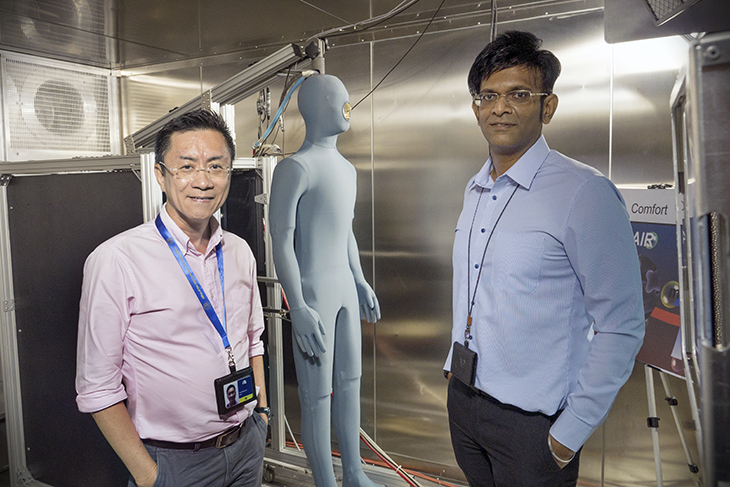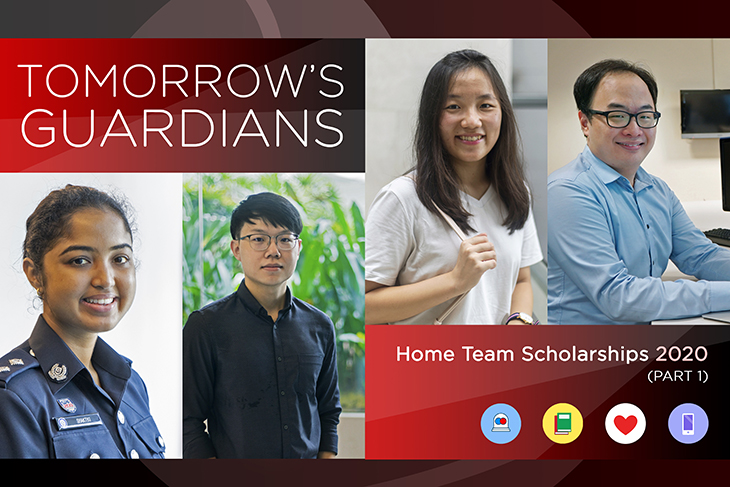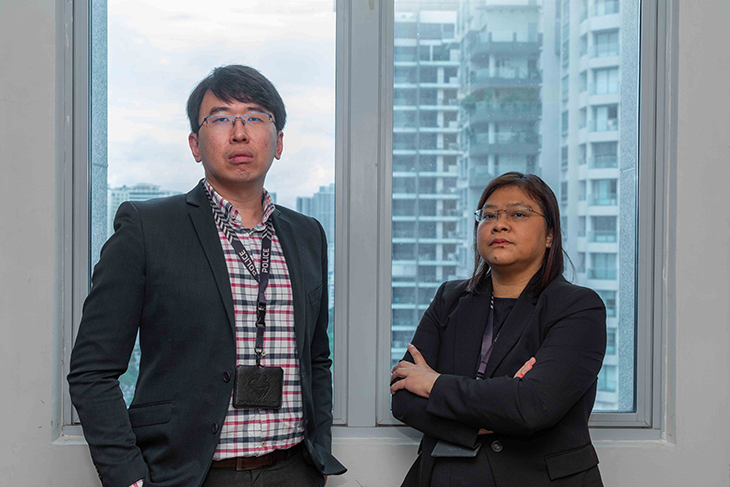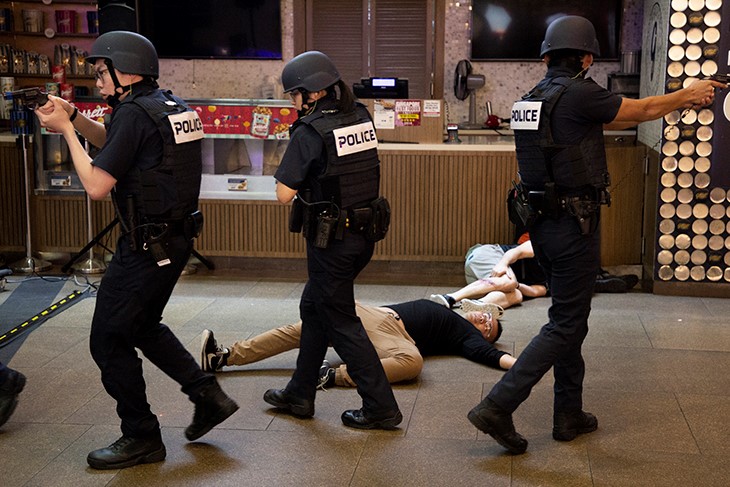You’d hardly know it from looking at Woodlands Checkpoint from the outside, but very cool things are brewing within its walls.
Step inside a nondescript office along one of its corridors and you’ll find the Home Team’s climatic chamber, a leading-edge facility that helps our officers perform their jobs better. We spoke to Mr Ying Meng Fai and Dr Saravana Kumarasamy from the
MHA Office of the Chief Science and Technology Officer (OCSTO) about the unique testing and research capabilities of the chamber (and its single uncomplaining, blue-skinned resident).

Mr Ying Meng Fai (left) and Dr Saravana Kumarasamy at OCSTO’s climatic chamber. PHOTO: Home Team News
First, tell us a little about yourselves.
Mr Ying: We’re both engineers by training; I started out at the
Defence Science and Technology Agency and was with
DSO National Laboratories before coming to MHA in 2008.
Dr Saravana: I was previously with the
Agency for Science, Technology and Research. I joined MHA in 2013 to apply Human Factors Engineering to Home Team challenges. It’s a broad field as Human Factors Engineering looks at the design of machines, systems, work processes and environments that take into account the safety, comfort and productivity of users.
Mr Ying: In the Home Team context, Human Factors Engineering is increasingly important because it can help our officers better deal with high-stress operations and physical fatigue.
Tell us about the climatic chamber. What is it used for, and how have Home Team officers benefitted from it?
Mr Ying: The chamber was set up in 2009 and is currently the only facility of its kind in the Home Team. It allows the precise control of factors such as temperature, humidity and sunlight simulation so that we can make very exact evaluations, for protective clothing, for example.
Over the years, this has helped us to evaluate and refine a range of clothing and equipment for the
Singapore Police Force (SPF) and the
Singapore Civil Defence Force (SCDF). These include load-bearing vests, uniforms, protective equipment worn by officers of the SPF’s Special Operations Command, micro-cooling vests, hazmat gloves, different types of personal protective equipment and firefighting suits, and so on.
Dr Saravana: Our most recent collaboration with the SPF was on their new-generation uniform, which was launched in April 2018. The previous uniform had been in use since 1985 and was due for a review. We subjected the new uniform options to a battery of tests, to see which performed the best.

Multi-sensor platform: The thermal manikin is able to mimic the responses of a human subject, with the added benefit that it can withstand multiple test cycles and changes in measurement parameters. PHOTOS: Home Team News
Mr Ying: And that’s the advantage of the climatic chamber, and the thermal manikin as well – they allow us to take precise key measures repeatedly, so that our findings are robust. The manikin is an especially good tool as it has a range of sensors, can produce heat (just like a real human), replicates human movement, and even sweats!
How did your findings impact the final evaluation and choice?
Dr Saravana: Among the factors we considered were the materials, weave, fit and cut. In the end, we found that a uniform made with 98 percent polyester and 2 percent spandex best suited the SPF’s operational needs. The new uniform is more stretchy than the previous one, it also absorbs sweat better and dries faster. This was borne out by operational trials that we conducted in 2015.
Other enhancements included concealed plastic buttons, a better cut and knee pads. The result is a modern, performance-oriented uniform that really helps frontline SPF officers do their jobs better.

More than meets the eye: Launched in April 2018, the SPF’s new uniform resembles the old one, but boasts a host of enhancements from design, cut and materials to weave. PHOTOS: Home Team News
Share with us a little-known aspect of your work.
Dr Saravana: Besides supporting the Home Team by conducting evaluation studies, we also focus on original, in-house research and development, as well as programming, to build up our capabilities in Science and Technology.
We work on projects that are highly translational, so that Home Team officers can immediately benefit from them. That’s why we’re constantly talking to them to learn what they need and collaborating with our partners on prototypes.
Mr Ying: We’re also working with the SCDF on a new climatic chamber that’s much larger and specially suited to their requirements. This one-stop testing centre for first responders will help them to enhance their strength, conditioning, cognition and resilience.
Dr Saravana: It’s about acclimatising SCDF officers who have to operate in hot zones for extended periods. Hopefully, our findings can be used to identify new performance measures and to develop better training methodologies.
What do you love about your work?
Mr Ying: It’s very satisfying to learn about what our fellow Home Team officers need, be able to propose innovative solutions, and see these deployed into the field.
Dr Saravana: We’re given the independence to find Science and Technology solutions to deal with urgent, real-world problems. This is very fulfilling to me!
A Career in the Home Team
For more info on the Home Team's Science and Technology Scholarship, visit our
career website.








.jpg?sfvrsn=e1ae8cf0_0)
